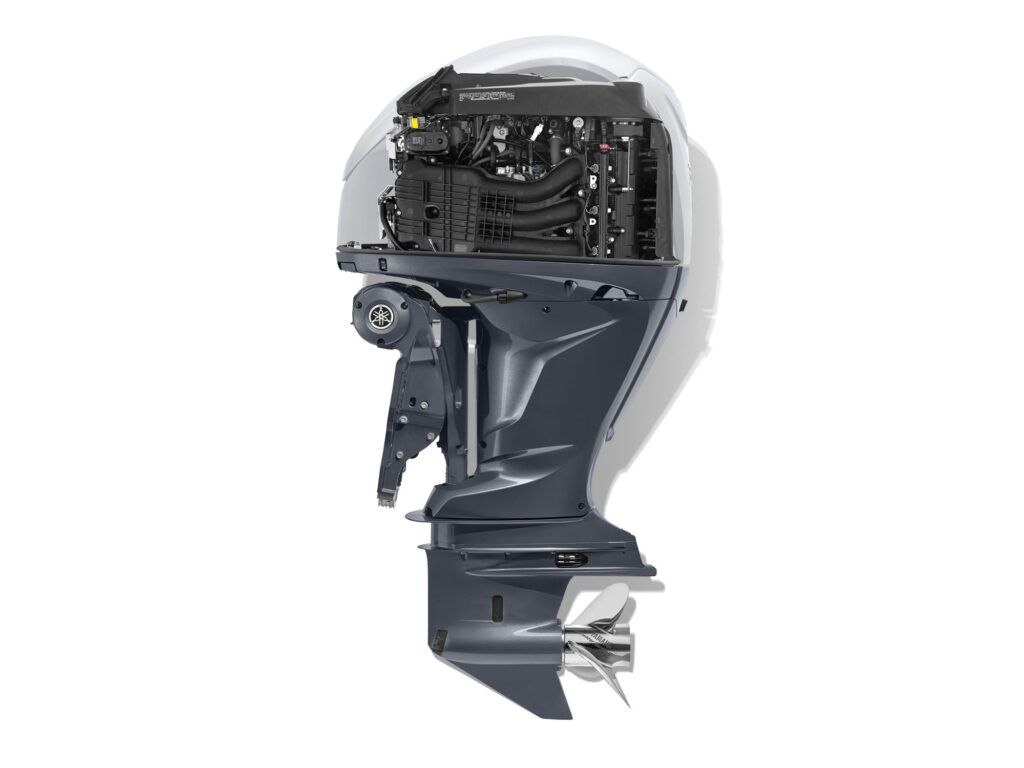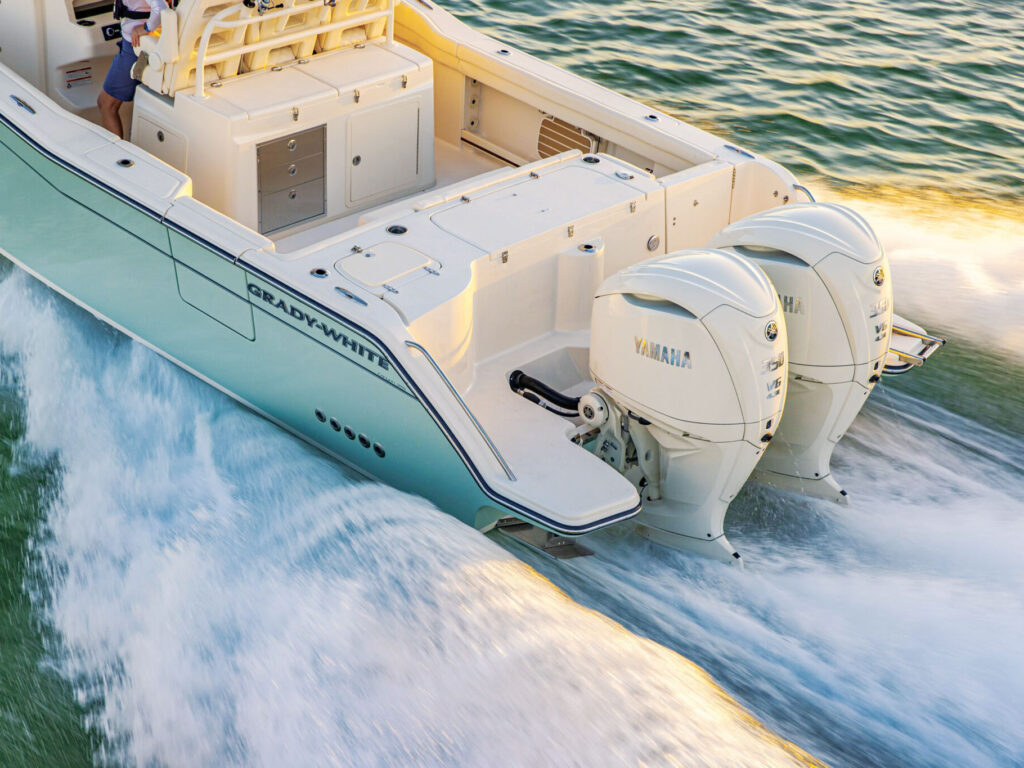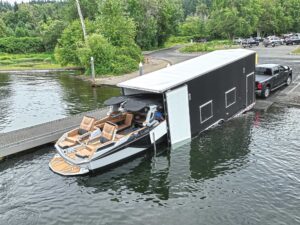
As we see more midsize boats opting for big-horsepower or twin-engine installations, an outboard’s power-to-weight ratio ranks as a major factor in how a boat performs. With its new F350 V-6, Yamaha boasts the best power-to-weight ratio in its class, making it a great choice for boats in the 20- to 35-foot length-overall range. It fills a gap in Yamaha’s stable of outboards previously occupied by its now-defunct V-8.
I recently got the chance to test twin-engine installations on two very different types of boats: first on a Bennington QX 27 pontoon boat and then on a Tidewater 3100 Carolina Bay hybrid center-console. On the Bennington, we hit the 60 mph mark while experiencing an instantaneous hole shot and super-quick midrange acceleration. On the Tidewater, which is about 3,000 pounds heavier than the Bennington, we still exceeded the 60 mph mark and enjoyed great midrange cruising performance.
The new V-6 4.3L F350 is based on the engine block that Yamaha uses in its existing V-6 lineup that ranges from 225 to 300 hp. It comes from the same family but with a lot of new attributes.
“It’s based on the 4.2L block but with a lot of new technology,” says David Meeler, Yamaha’s technical marketing manager. “It features a redesigned intake to allow more air in for greater combustion. It also has a new camshaft, and we created more displacement in order to create more power.”
Read Next: Yamaha XTO 450 Offshore V-8 Outboard

In beefing up the engine to account for the increased power and torque, Yamaha added only 18 pounds to the F350 compared with the existing F300. Which is how, at 629 pounds, the F350 can boast the best power-to-weight ratio in its class—beating out competitors by between 40 and 100 pounds.
As Meeler referenced, the larger intake as well as bigger exhaust valves help ramp up the horsepower. (According to Yamaha, the intake manifolds offer 40 percent larger surge tanks than the F300.) Additionally, Yamaha remapped the fuel-injection control in the ECM, which produces a longer injector duration and further increases the power.
With the new F350, Yamaha didn’t just boost the horsepower, but it also increased charging power, with a 70-amp alternator that produces more than 30 net amps per outboard at idle, which Yamaha says almost doubles the output of its F300. The extra juice comes in handy while running the ever-more-complex array of electronic devices on board.
On both the Bennington and the Tidewater, shifting and steering proved seamless thanks to Yamaha’s DES (Digital Electronic Controls), and both boats proved to have responsive steering both at speed and while idling back into the marina. When it came time to dock, both boats featured Yamaha’s Helm Master EX joystick controls, which allowed us to precisely pivot the boats to back into tight slips in a tricky current with no issues.
Overall, in both of my sea trials, the new Yamaha F350s really flexed their muscles.









